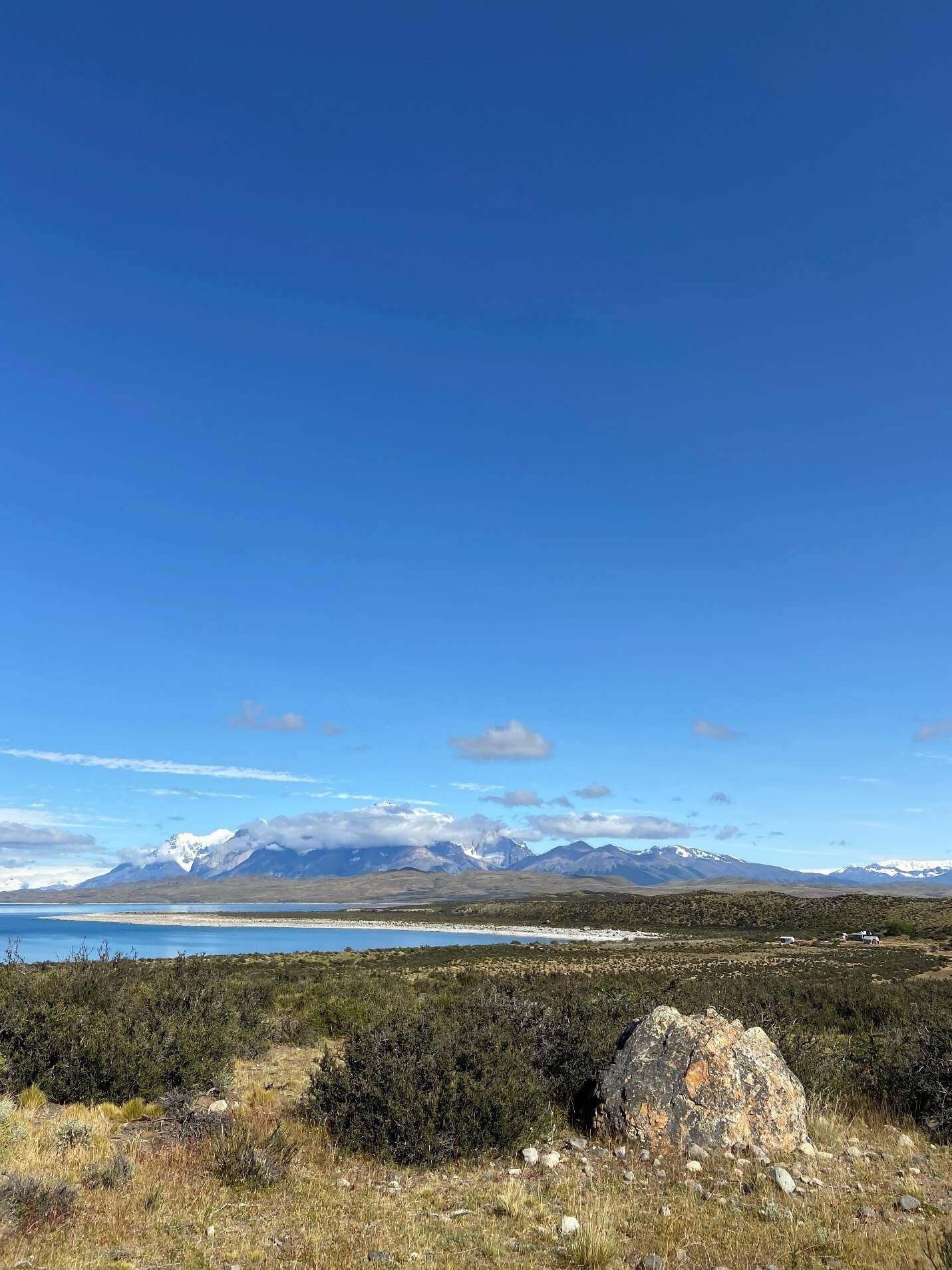
By: Jack Henry Buck
Back to Where I’ve Never Been
Patagonia is vast.
It may not look so large on a map, but seeing it stretch before you, experiencing it firsthand, this land is enormous. And it is overflowing with wonder.
Read a few travel brochures, websites, or books, and you’ll likely step away with an impression of Patagonia as a last great wilderness at the end of the world, with towering rocky peaks, icy blue glaciers, and fiery volcanoes. Some name it a frontier calling back to the bygone days of the American West. In a sense it contains threads from all of these narratives, but Patagonia is truly woven as so much more- the scenery may (in some places) look familiar, but the social and ecological landscapes are uniquely their own.

Parque Nacional Torres del Paine, Magallanes Region

Parque Nacional Torres del Paine, Magallanes Region
Patagonia is difficult to put into words. It is a place, but not a country, a region, a park, or anything easily definable by borders and boundaries. It has a unique culture, though within each area there are still more cultural variations with fascinating human and natural histories.
Here at SFS Chile, mountains are not just a pretty backdrop. Forests are not mere scenery to gaze at. Parks are not boxes to be checked on a to-visit list. They are lecture halls and laboratories, sources of knowledge and reflection and inspiration. I have had unique opportunities to dive in firsthand and experience these landscapes for what they were, what they are today, and how they will continue to change. In only a few weeks I have observed guanacos lazily grazing in the pampas of Torres del Paine National Park, walked back in time through the Valdivian rainforest, and counted penguins and cormorants roosting off the rocky island of Chiloé, among many other new experiences.
I’ve never been to a private conservation park before. I’ve also never laid eyes on a rainforest aside from a few BBC nature documentaries. Even if only for a short time, I am lucky to live in and invest myself in Patagonia by experiencing this unique place through so much more than pages of a travel guide or a two-week vacation, but through practicing my meager Spanish and getting to know an array of people who call it home.

The Valdivian Rainforest in Parque Katalapi, Los Lagos Region

Osorno Volcano, Los Lagos Region
But there is more to all of these places, all of these people, all of these histories than I can pick up in three and a half months. I am hardly the first traveler to try and describe Patagonia, and I certainly shall not be the last. Each of us brings slightly different expectations and perceptions to this land, but they won’t be the same when we leave it- how could they? This place is rich in diversity of all kinds, in picturesque sights, in fascinating people and cultures. I’ve found that Patagonia needs to be deeply experienced to begin to understand it. Try as we may, words cannot do it justice. But I’ve learned so much already.
And we’ve only just begun.

Northern coast of Chiloe Island, Los Lagos Region
Related Posts

Camila Rojas: Alumni Spotlight⭐

